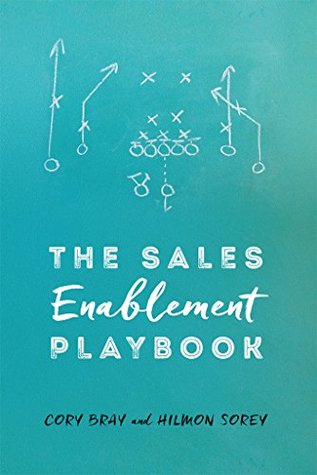More on this book
Kindle Notes & Highlights
A required competency for effectively managing a sales enablement ecosystem is coaching. We struggled with whether
Create a culture that views sales enablement as a company-wide ecosystem. *Develop specific goals for each department related to how they can enable sales and avoid “sales disablement” activities. *Define metrics that will track the success of enablement activities.
A sales process is a set of clearly defined steps and methods of communication between a company and its prospects.
Simplicity. Structured Data. Consistency. These should be the themes when it comes to your CRM implementation, and your sales process in general.
Anyone who has sold successfully before can ask relevant qualifying questions with limited info. All they really need to know is: *The three best-use cases for what they sell *Names of a handful of customers and how they were successful *A good next step after their first conversation
If a stable sales process exists, training new hires on how to execute should be very simple. *Process Documentation: What are each of the steps? *Stage Exit Criteria: As discussed in chapter 2, what is required to exit each stage (and list any exceptions that exist)? *CRM Training: What are the required and optional fields to support actionable intelligence?
Good Demos: Uncover more pain by talking about how other people like your prospect have created substantial value
Time to first deal or conversion (SDRs) *Time to quota attainment *Time to consistent quota attainment *% of team who can competently conduct a whiteboard demo
Sales Enablement Goal: Everyone on the sales team knows each buyer persona inside and out, including what they do, what their pain is, and how to win their business.
Quantify the Pain: How much does it cost the company? *Quantify the Risk: If the pain is not solved, what else happens? Do people miss promotions? Lose jobs? Nothing? *Rank the Pain: For each persona, of all the things they need to do, where does solving the pain fit in the rankings?
The last bullet above is key. If solving the pain your product solves isn’t a top-5 priority for someone with
Current pricing for each product *Specific scenarios in which pricing can be adjusted *Messaging to use when delivering pricing information
The messaging piece here is critical. Salespeople often have difficulty talking about money and uncovering a prospect’s willingness and ability to invest in resolving their problem.
For each new product feature that’s introduced, each sales rep should be able to demonstrate how the feature solves each SPECIFIC pain point for each unique persona.


